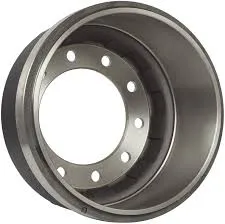
-
 Afrikaans
Afrikaans -
 Albanian
Albanian -
 Amharic
Amharic -
 Arabic
Arabic -
 Armenian
Armenian -
 Azerbaijani
Azerbaijani -
 Basque
Basque -
 Belarusian
Belarusian -
 Bengali
Bengali -
 Bosnian
Bosnian -
 Bulgarian
Bulgarian -
 Catalan
Catalan -
 Cebuano
Cebuano -
 Corsican
Corsican -
 Croatian
Croatian -
 Czech
Czech -
 Danish
Danish -
 Dutch
Dutch -
 English
English -
 Esperanto
Esperanto -
 Estonian
Estonian -
 Finnish
Finnish -
 French
French -
 Frisian
Frisian -
 Galician
Galician -
 Georgian
Georgian -
 German
German -
 Greek
Greek -
 Gujarati
Gujarati -
 Haitian Creole
Haitian Creole -
 hausa
hausa -
 hawaiian
hawaiian -
 Hebrew
Hebrew -
 Hindi
Hindi -
 Miao
Miao -
 Hungarian
Hungarian -
 Icelandic
Icelandic -
 igbo
igbo -
 Indonesian
Indonesian -
 irish
irish -
 Italian
Italian -
 Japanese
Japanese -
 Javanese
Javanese -
 Kannada
Kannada -
 kazakh
kazakh -
 Khmer
Khmer -
 Rwandese
Rwandese -
 Korean
Korean -
 Kurdish
Kurdish -
 Kyrgyz
Kyrgyz -
 Lao
Lao -
 Latin
Latin -
 Latvian
Latvian -
 Lithuanian
Lithuanian -
 Luxembourgish
Luxembourgish -
 Macedonian
Macedonian -
 Malgashi
Malgashi -
 Malay
Malay -
 Malayalam
Malayalam -
 Maltese
Maltese -
 Maori
Maori -
 Marathi
Marathi -
 Mongolian
Mongolian -
 Myanmar
Myanmar -
 Nepali
Nepali -
 Norwegian
Norwegian -
 Norwegian
Norwegian -
 Occitan
Occitan -
 Pashto
Pashto -
 Persian
Persian -
 Polish
Polish -
 Portuguese
Portuguese -
 Punjabi
Punjabi -
 Romanian
Romanian -
 Russian
Russian -
 Samoan
Samoan -
 Scottish Gaelic
Scottish Gaelic -
 Serbian
Serbian -
 Sesotho
Sesotho -
 Shona
Shona -
 Sindhi
Sindhi -
 Sinhala
Sinhala -
 Slovak
Slovak -
 Slovenian
Slovenian -
 Somali
Somali -
 Spanish
Spanish -
 Sundanese
Sundanese -
 Swahili
Swahili -
 Swedish
Swedish -
 Tagalog
Tagalog -
 Tajik
Tajik -
 Tamil
Tamil -
 Tatar
Tatar -
 Telugu
Telugu -
 Thai
Thai -
 Turkish
Turkish -
 Turkmen
Turkmen -
 Ukrainian
Ukrainian -
 Urdu
Urdu -
 Uighur
Uighur -
 Uzbek
Uzbek -
 Vietnamese
Vietnamese -
 Welsh
Welsh -
 Bantu
Bantu -
 Yiddish
Yiddish -
 Yoruba
Yoruba -
 Zulu
Zulu
Understanding the Components and Terminology of Brake Drum Systems
Understanding Brake Drum Parts Essential Components for Vehicle Safety
Brake systems are vital for the safe operation of vehicles, and one of the key components of drum brake systems is the brake drum itself. This article will explore various parts of the brake drum assembly, enhancing our understanding of each component's role in ensuring effective braking performance.
1. Brake Drum The Core Component
The brake drum is a cylindrical component made of cast iron or aluminum that rotates with the wheel. When the brakes are engaged, the brake shoes press against the inner surface of the drum, generating friction that slows down the vehicle. It's critical for the drum to have a smooth inner surface for optimal performance and to avoid excessive wear on the brake shoes.
2. Brake Shoes The Friction Providers
Brake shoes are curved pieces that expand against the inner walls of the brake drum when the brake pedal is pressed. They are lined with friction material, which can be made from various compounds, including organic, metallic, or ceramic materials. The quality of brake shoes is crucial as they directly affect stopping power and durability. As they wear down, proper maintenance or replacement is necessary to ensure safety.
3. Wheel Cylinder The Actuator
Located at the top of the brake assembly, the wheel cylinder is a hydraulic component that converts brake fluid pressure from the master cylinder into mechanical force. When the brake pedal is pressed, hydraulic fluid pushes the pistons in the wheel cylinder outward, forcing the brake shoes against the drum. This component must be in good working condition to ensure effective braking response.
4. Return Springs Ensuring Proper Positioning
brake drum parts names

Return springs are critical for the proper functioning of drum brakes. Once the brake pedal is released, these springs pull the brake shoes back into the resting position, ensuring that they do not constantly contact the brake drum. This not only prevents drag but also improves the overall efficiency of the braking system. Maintaining the integrity of these springs is vital for optimal brake performance.
5. Adjuster Mechanism Maintaining Clearance
The adjuster mechanism keeps the proper distance between the brake shoes and the brake drum, compensating for wear over time. As the brake shoes wear down, the adjuster ensures that the shoes are moved closer to the drum to maintain effective braking force. Regular checks and adjustments are essential to prevent excessive pedal travel and maintain efficient braking.
6. Dust Shield Protection Against Contamination
The dust shield, usually made from metal, protects the brake components from dirt, debris, and moisture, which can adversely affect braking performance. Keeping the dust shield intact is important to avoid contamination of the brake pads and ensure longevity and effectiveness of the braking system.
7. Brake Hardware The Supporting Cast
Various small components such as clips, pins, and retainers are collectively referred to as brake hardware. These parts secure the brake assembly components in place and facilitate smooth operation. Over time, these components can corrode or wear out, which can lead to brake failure or uneven wear, making regular inspection and replacement crucial.
Conclusion The Importance of Brake Drum Parts
A properly functioning drum brake system is vital for vehicle safety. Each component of the brake drum assembly plays a significant role in ensuring effective braking performance. Regular maintenance and timely replacement of worn-out parts can help ensure that your braking system remains reliable and efficient. Understanding these components not only helps in better vehicle maintenance but also enhances awareness of safety practices while driving. Recognizing the importance of brake drum parts ultimately aids in prolonging the life of the braking system and ensuring a safer driving experience.
-
What Are Drum BrakesNewsJul.07,2025
-
Understanding Brake Drum MaterialNewsJul.07,2025
-
Semi-Trailer Brake Drum: A Key Component for Extreme Loads and Long-Distance TransportNewsJul.07,2025
-
Drum Brake Pads for SaleNewsJul.07,2025
-
Brake Drums for SaleNewsJul.07,2025
-
Brake Drum ManufacturerNewsJul.07,2025
-
Aluminum Brake Drums: The Future of High-Performance CarsNewsJul.07,2025
